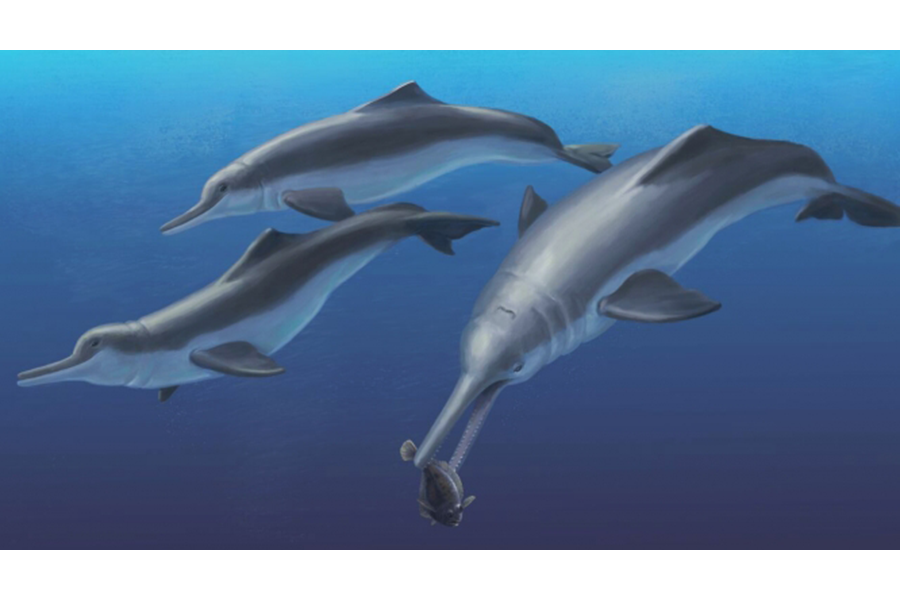Why did river dolphins leave oceans? Ancient fossils hold clues.
Loading...
Smithsonian scientists discovered an ancient “river” dolphin.
Off the Caribbean coast of Panama, a team of Smithsonian scientists discovered a fossil that dates back roughly 6 million years. The fossil appears to be an ancestor of the modern river dolphin and has been named Isthminia panamensis.
There are just four species of river dolphin left today and all four are endangered. The fossils of ancient river dolphins have scientists believing that the case was very different a few million years ago. “Fossil evidence suggests that river dolphins’ ancestors were widespread around the globe,” the Smithsonian press release states. I. panamensis was one of these flourishing dolphin ancestors.
Population size is nowhere near the biggest difference between the modern river dolphin and its ancestor.
“We discovered this new fossil in marine rocks, and many of the features of its skull and jaws point to it having been a marine inhabitant, like modern oceanic dolphins,” Nicholas D. Pysenson, curator of fossil marine mammals at the Smithsonian’s National Museum of Natural History and the lead author of the study, said in the release.
Scientists found that while the fossil is a close relative to the modern river dolphin, I. panamensis is thought to have lived in the ocean. This suggests that the fossil might reveal an important link in the evolutionary process of river dolphins.
“While whales and dolphins long ago evolved from terrestrial ancestors to fully marine mammals, river dolphins represent a reverse movement by returning inland to freshwater ecosystems. As such, fossil specimens may tell stories not just of the evolution these aquatic animals, but also of the changing geographies and ecosystems of the past,” said Aaron O’Dea, a staff scientist at the Smithsonian Tropical Research Institute in Panama, in the press release.
Examining this fossil may help scientists better understand the evolutionary path of the river dolphin and how its environment influenced evolution. Such questions will become increasingly relevant as the world changes ever more rapidly. The researchers published their findings in the open source, journal PeerJ.







